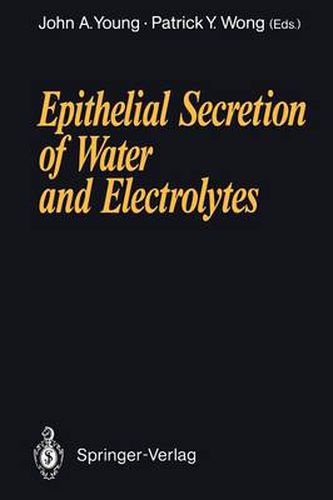Readings Newsletter
Become a Readings Member to make your shopping experience even easier.
Sign in or sign up for free!
You’re not far away from qualifying for FREE standard shipping within Australia
You’ve qualified for FREE standard shipping within Australia
The cart is loading…






This title is printed to order. This book may have been self-published. If so, we cannot guarantee the quality of the content. In the main most books will have gone through the editing process however some may not. We therefore suggest that you be aware of this before ordering this book. If in doubt check either the author or publisher’s details as we are unable to accept any returns unless they are faulty. Please contact us if you have any questions.
In 1976, when Springer-Verlag commissioned Professors Giebisch, Tosteson, and Ussing to edit what was destined to become a monumental five-volume Handbuch ( Membrane Transport in Biology , 1978 [Vols I, II, III] and 1979 [Vols IV A, B]), the subject of transepithelial secretion was still in its infancy. Not surprisingly, therefore, their Handbuch concentrated mainly on trans- epithelial absorption, although substantial chapters dealing with some secre- viz. Ion Transport Across the Choroid Plexus tory organs were included, (by E. M. Wright), Sweat Glands (by J. H. Thaysen), Lacrimal Gland (by J. H. Thaysen) and Transport Across Insect Excretory Epithelia (by J. P. H. Maddrell) in Volume III and Transport in Salivary and Salt Glands (by J. A. Young and E. W. Van Lennep), Gastric Secretion (by T. E. Machen and J. G. Forte), Transport Processes in the Exocrine Pan- creas (by I. Schulz and K. J. Ullrich), and Transport of Ions in Liver Cells (by M. Claret) in Volume IVB. The publication in 1977 of the seminal paper of Silva and his colleagues on the mechanism of secretion of salt and water in the salt excreting gland of the dogfish (American Journal of Physiology 233, F298-F306, 1977) provided physiologists with their first real insight into the mechanisms underlying transepithelial fluid secretion, however, and, in the ensuing years, interest in the topic has exploded as is evidenced by the numerous international symposia on exocrine secretion held since that date.
$9.00 standard shipping within Australia
FREE standard shipping within Australia for orders over $100.00
Express & International shipping calculated at checkout
This title is printed to order. This book may have been self-published. If so, we cannot guarantee the quality of the content. In the main most books will have gone through the editing process however some may not. We therefore suggest that you be aware of this before ordering this book. If in doubt check either the author or publisher’s details as we are unable to accept any returns unless they are faulty. Please contact us if you have any questions.
In 1976, when Springer-Verlag commissioned Professors Giebisch, Tosteson, and Ussing to edit what was destined to become a monumental five-volume Handbuch ( Membrane Transport in Biology , 1978 [Vols I, II, III] and 1979 [Vols IV A, B]), the subject of transepithelial secretion was still in its infancy. Not surprisingly, therefore, their Handbuch concentrated mainly on trans- epithelial absorption, although substantial chapters dealing with some secre- viz. Ion Transport Across the Choroid Plexus tory organs were included, (by E. M. Wright), Sweat Glands (by J. H. Thaysen), Lacrimal Gland (by J. H. Thaysen) and Transport Across Insect Excretory Epithelia (by J. P. H. Maddrell) in Volume III and Transport in Salivary and Salt Glands (by J. A. Young and E. W. Van Lennep), Gastric Secretion (by T. E. Machen and J. G. Forte), Transport Processes in the Exocrine Pan- creas (by I. Schulz and K. J. Ullrich), and Transport of Ions in Liver Cells (by M. Claret) in Volume IVB. The publication in 1977 of the seminal paper of Silva and his colleagues on the mechanism of secretion of salt and water in the salt excreting gland of the dogfish (American Journal of Physiology 233, F298-F306, 1977) provided physiologists with their first real insight into the mechanisms underlying transepithelial fluid secretion, however, and, in the ensuing years, interest in the topic has exploded as is evidenced by the numerous international symposia on exocrine secretion held since that date.